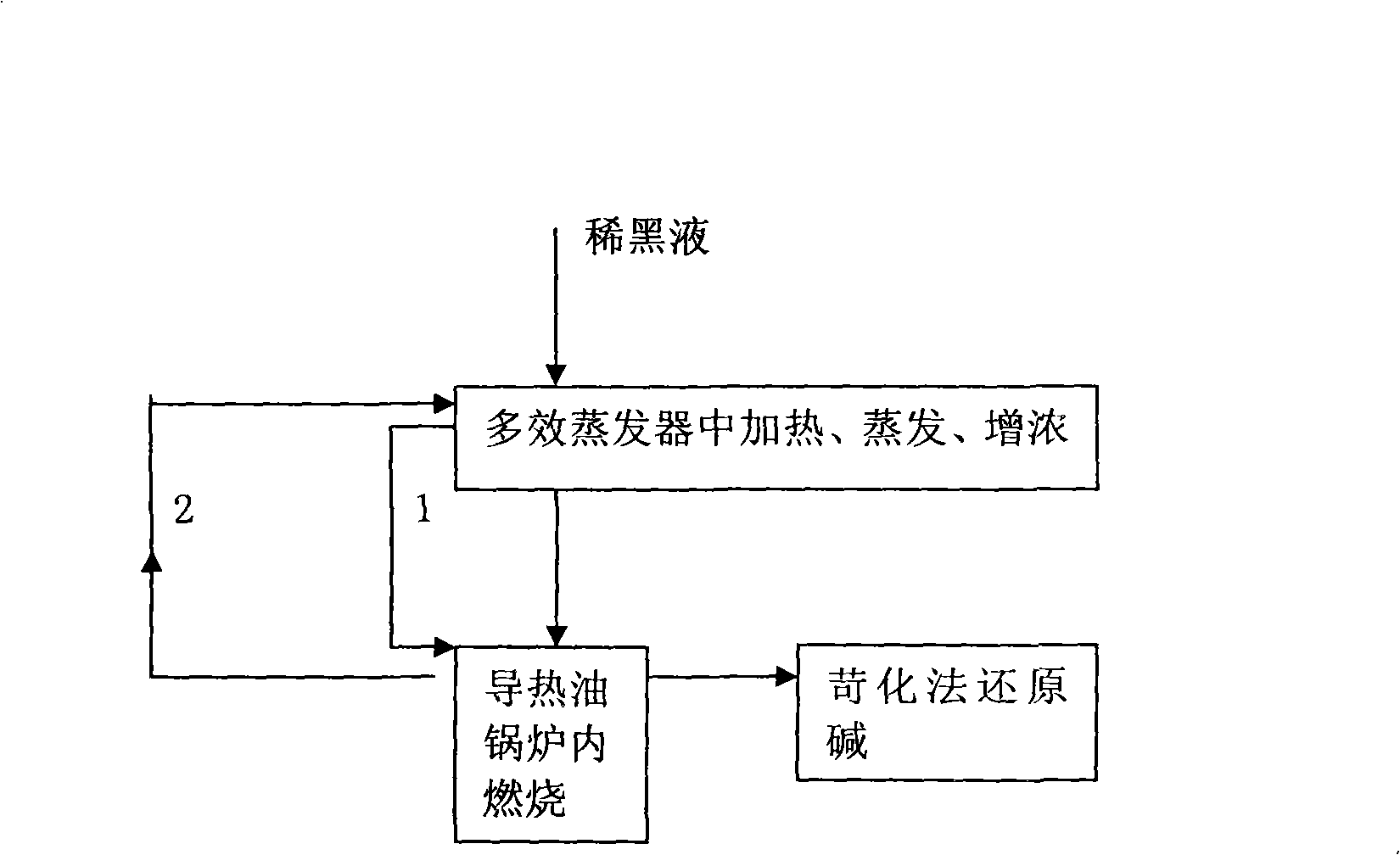Process for incinerating cotton linter black liquor and recycling alkaline by utilizing heat conduction oil boiler
A heat-conducting oil boiler and cotton linters technology, applied in incinerators, combustion methods, chemical industry, etc., can solve the problems of high manufacturing and operating costs of steam boilers, low heat utilization rate of the whole system, and incomplete recovery of steam, etc. Achieve the effect of being conducive to environmental protection, low manufacturing cost, and increasing manufacturing cost
- Summary
- Abstract
- Description
- Claims
- Application Information
AI Technical Summary
Problems solved by technology
Method used
Image
Examples
Embodiment 1
[0021] The dilute black liquor from the extraction section enters the multi-effect evaporator, and the multi-effect evaporator uses circulating heat transfer oil as the heat source. The dilute black liquor is heated, evaporated, and thickened by the multi-effect evaporator. At the same time, spray the enriched black liquor into the heat-conducting oil boiler for combustion. The combustion is carried out at the bottom of the furnace with a cushion layer. The organic matter in the black liquor is completely burned, and the inorganic matter in the black liquor becomes Na 2 CO 3 , Na 2 CO 3 Discharge out of the furnace in the form of melt, dissolve after air cooling, Na 2 CO 3 It can be reduced to alkali by causticization. At the same time, the heat energy generated in the heat transfer oil boiler is absorbed by the heat transfer oil in the heating surface, and the heat transfer oil is supplied externally when the temperature of the heat transfer oil rises to 200°C-280°C; Liq...
Embodiment 2
[0023] The dilute black liquor from the extraction section enters the multi-effect evaporator, and the multi-effect evaporator uses circulating heat transfer oil as the heat source. The dilute black liquor is heated, evaporated, and thickened by the multi-effect evaporator. At the same time, the thickened black liquor is sprayed into the heat-conducting oil boiler for combustion. The combustion is carried out in a fluidized bed at the bottom of the furnace. The organic matter in the black liquor is completely burned, and the inorganic matter in the black liquor becomes Na 2 CO 3 , Na 2 CO 3 It can be reduced to alkali by causticization. At the same time, the heat energy generated in the heat transfer oil boiler is absorbed by the heat transfer oil in the heating surface, and the heat transfer oil is supplied externally when the temperature of the heat transfer oil rises to 200°C-280°C; Liquid, as the external heat source of the multi-effect evaporator, and the heat source o...
PUM
 Login to View More
Login to View More Abstract
Description
Claims
Application Information
 Login to View More
Login to View More - R&D
- Intellectual Property
- Life Sciences
- Materials
- Tech Scout
- Unparalleled Data Quality
- Higher Quality Content
- 60% Fewer Hallucinations
Browse by: Latest US Patents, China's latest patents, Technical Efficacy Thesaurus, Application Domain, Technology Topic, Popular Technical Reports.
© 2025 PatSnap. All rights reserved.Legal|Privacy policy|Modern Slavery Act Transparency Statement|Sitemap|About US| Contact US: help@patsnap.com

